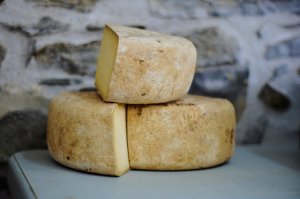What is Romano Cheese?
Romano cheese is a hard, salty cheese made from sheep’s milk. Today some current brands make it with goats milk, or even cows milk. It is one of the oldest cheeses in Italy, with a history dating back to the Roman Empire. The cheese was originally made in the countryside around Rome. Today, Romano cheese is still made in the same way as it was centuries ago. The milk from sheep that graze on the hills of Sardinia and Lazio is used to make the cheese, which is then cured for at least 5 months. The finished cheese has a hard, crumbly texture and a sharp, salty flavor.
But if you run out of Romano cheese, or you find the taste too strong, what can you use as a substitute? Also is there a dairy-free alternative for Romano cheese? What are the best substitutes for Romano Cheese?
Okay, we would recommend the following dairy alternatives as suitable substitutes – Parmesan, Cheddar Cheese, Manchego, or Piave. And if you are looking for a non-dairy option we would recommend – nutritional yeast, soy, gluten or tree nuts.
If you prefer you could also consider making your own homemade vegan Romano Cheese. I have included my favorite recipe that I always like to use (see below). Its quick and easy to make and will last for up to two weeks in the fridge – hope you like it too.
Okay, before we look at the suitable substitutes for Romano Cheese, let’s deal with that empty cupboard situation!
Where can I buy Romano Cheese?
If you want to be more prepared and ensure you don’t run out of Romano Cheese then you should stock up now.
Nowadays most delicatessens and general supermarkets stock a wide variety of Romano Cheese. Or if you prefer you can also purchase Romano Cheese on-line. Here is a link for a 1 lb block of authentic Romano Cheese.
So why not jump on and place your order today.
STOCK UP NOW!
Authentic Romano Cheese – 1 lb block
Made from full flavored, pasteurized sheep’s milk cheese.
Genuine Italian cheese.
Well packaged and arrives fresh to your door. Stores well in the fridge.
What can I substitute for Romano Cheese?
Here are some of the best ingredients to substitute the flavor and role that Romano Cheese provides in your recipes.
- Parmesan
- Cheddar Cheese
- Manchego
- Piave
- Non-dairy substitutes for Romano Cheese – nutritional yeast, soy, gluten or tree nuts.
Romano Cheese substitutes
Parmesan
Parmesan cheese is a commonly used substitute for Romano cheese in recipes on a 1:1 ratio. It is an Italian cheese made from cow’s milk, similar to Romano cheese. While there are some flavor differences, Parmesan can provide a comparable taste and texture when used as a substitute. Here are a few things to consider when using Parmesan as a substitute for Romano:
- Parmesan has a rich, nutty, and savory flavor. While it may not be as sharp or salty as Romano, it still adds a delicious umami element to dishes.
- Parmesan has a hard and granular texture, similar to Romano cheese. Try grating it, or shaving it, over dishes, to add a pleasant texture and enhance the overall experience.
- Romano cheese is known for its saltiness, so you may need to adjust the salt content in your recipe when using Parmesan. Taste your dish and add additional salt if needed.
- Parmesan cheese melts well and can be used in cooked dishes that require the melting characteristic of Romano. It can add a rich and creamy element to sauces, soups, or gratins.
- Parmesan cheese comes in different ages, and the flavor intensifies with age. Younger Parmesan (around 12-18 months) will be milder, while aged Parmesan (24 months or more) will have a stronger and more complex flavor.
While Parmesan is a suitable substitute for Romano cheese in many recipes, it’s important to note that it won’t provide an identical flavor profile. However, it can still deliver a delightful taste and complement a wide range of dishes.

Cheddar Cheese
Cheddar cheese can be a good substitute for Romano cheese in most recipes. They are both hard cheeses with a sharp, salty flavor. However, cheddar cheese is slightly milder in flavor than Romano, and it has a more crumbly texture.
Here are some other things to consider when substituting cheddar cheese for Romano cheese:
- The texture of the cheese: Cheddar cheese is not as crumbly as Romano, so it may not be as good for grating. If you are using cheddar cheese in a recipe where the Romano cheese would be grated, you may want to grate it yourself or use a different cheese that is more crumbly.
- The flavor of the cheese: Cheddar cheese is slightly milder in flavor than Romano, so you may need to add more salt to the dish if you are using cheddar cheese as a substitute.
- The melting properties of the cheese: Cheddar cheese melts well, so it can be used in dishes where Romano cheese would be melted.
Overall, cheddar cheese can be a good substitute for Romano cheese in most recipes. However, it is important to consider the texture and flavor of the cheese when making the substitution.
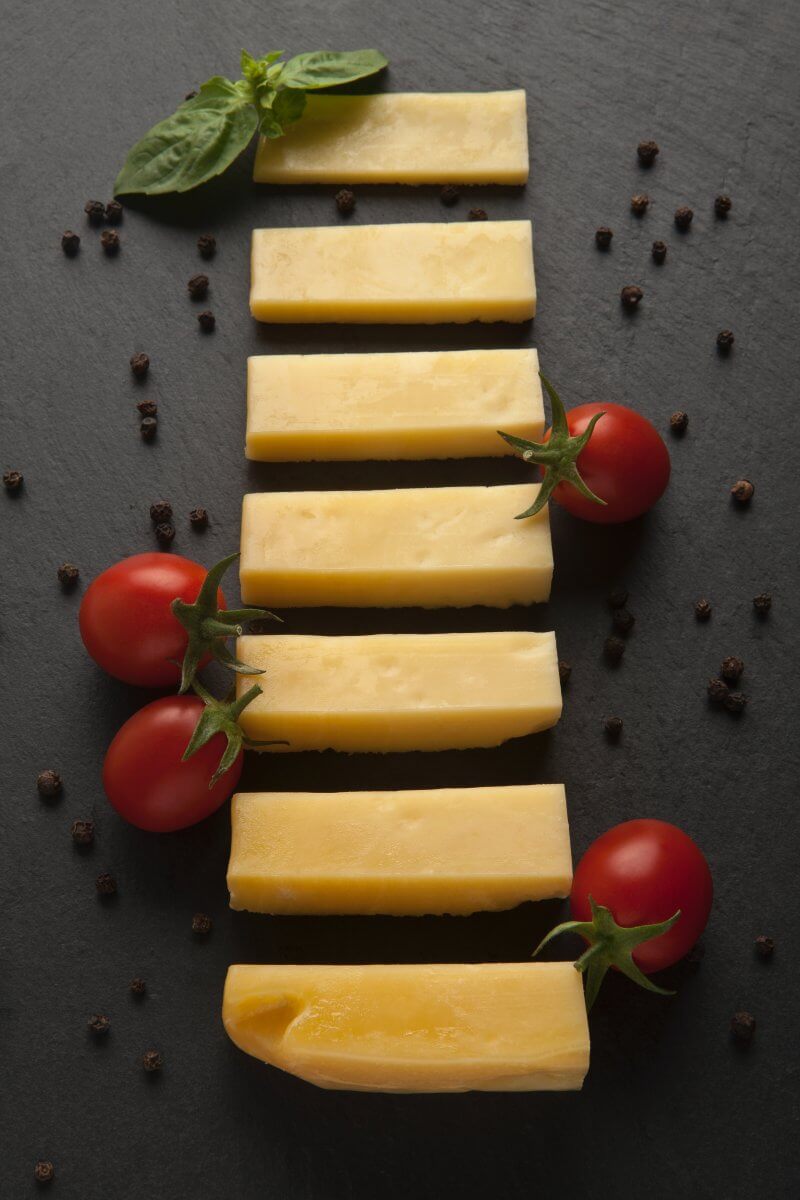
Manchego
Manchego cheese can be used as a substitute for Romano cheese in certain recipes. However remember it may not provide an identical flavor profile. Manchego cheese is a Spanish cheese made from sheep’s milk, similar to Romano Italian cheese. Here are a few things to consider when using Manchego as a substitute:
- Manchego cheese has a distinct flavor that is slightly nutty, buttery, and tangy. While it may not have the exact sharpness of Romano cheese, it can still add a rich and savory element to your dishes.
- Manchego is a firm cheese with a crumbly texture, similar to Romano. This makes it suitable for grating or shaving over dishes.
- Romano cheese is known for its salty taste, so you may need to adjust the salt content in your recipe when using Manchego. Taste your dish and add additional salt if necessary.
- Manchego cheese melts well and can be used in cooked dishes that require the melting characteristic of Romano. However, it may not achieve the exact same melt and stretch as Romano cheese.
- It’s worth noting that the flavor and characteristics of Manchego cheese can vary depending on its age. Younger Manchego (3-6 months) will be milder and creamier, while older Manchego (over 12 months) will be sharper and more robust.
Overall, while Manchego cheese can serve as a substitute for Romano in certain recipes, it won’t replicate the exact flavor profile. However, it can still add its unique qualities and enhance the taste of your dish.

Piave
Piave cheese can be a good substitute for Romano cheese in various recipes. It is an Italian cheese made from cow’s milk, similar to Romano. While it may not have the exact flavor profile, it can provide a comparable taste and texture. Here are some factors to consider when using Piave as a substitute:
- Piave cheese has a sweet and nutty flavor with hints of caramel. While it may not have the same sharpness as Romano, it offers a delightful taste that can enhance your dishes.
- Piave is a hard cheese with a granular texture, similar to Romano. It can be grated or shaved over dishes, adding a pleasant texture and depth of flavor.
- Romano cheese is known for its saltiness, so you might need to adjust the salt content in your recipe when using Piave. Taste your dish and add additional salt if necessary.
- Piave cheese has good melting properties, making it suitable for cooked dishes that require the melting characteristic of Romano. It can add a creamy and savory element to sauces, gratins, or baked dishes.
- Piave cheese comes in different ages, ranging from younger (around 6-12 months) to more mature (over 12 months). The older the Piave, the more intense and complex the flavor becomes.
While Piave cheese can serve as a substitute for Romano cheese in many recipes, keep in mind that it won’t provide an identical flavor profile. However, it can still bring a delicious taste and unique qualities to your dishes. Adjusting seasoning and experimenting with different ages of Piave can help you achieve the desired flavor balance.
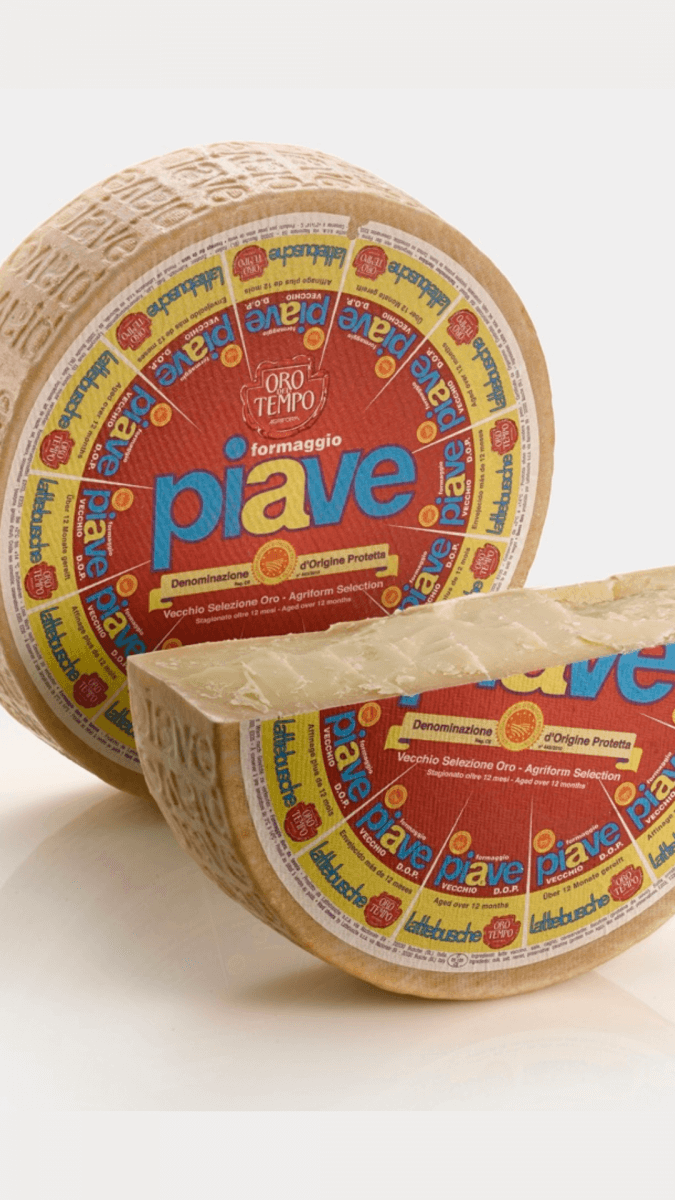
Nutritional Yeast (vegan option)
Nutritional yeast can be used as a vegan substitute for Romano cheese, but it is important to note that the flavor and texture will be quite different. It is a deactivated yeast product that is often used as a cheese substitute due to its savory, umami flavor. While it won’t replicate the exact taste of Romano cheese, it can provide a cheesy and nutty element to your dishes. Here are a few things to consider when using nutritional yeast as a substitute:
- Nutritional yeast has a unique flavor that is often described as cheesy, nutty, and slightly savory. While it won’t have the same sharpness or saltiness as Romano cheese, it can still add a pleasant and savory taste to your recipes.
- Nutritional yeast is available in the form of flakes or powder. It has a powdery texture and does not melt or have the same consistency as grated cheese. However, it can be sprinkled on top of dishes for added flavor and a bit of texture.
- Nutritional yeast is often used as a source of vitamins, minerals, and protein. It is rich in B vitamins and is a popular choice for those following a vegan or vegetarian diet. While Romano cheese provides its own set of nutrients, nutritional yeast can be a beneficial addition to plant-based meals.
- Romano cheese is known for its salty flavor, so you may need to adjust the salt content in your recipe when using nutritional yeast. Nutritional yeast can contribute some saltiness, but it’s generally less intense than Romano.
- Since nutritional yeast has its own unique taste, it’s best to experiment with small amounts and adjust according to your preferences. Start with a small quantity, taste your dish, and add more if desired.
While nutritional yeast can provide a cheesy flavor to dishes and serve as a substitute for Romano cheese, it won’t replicate the exact flavor profile. However, it can still offer a satisfying and dairy-free alternative for those looking to avoid animal products or follow a vegan lifestyle.
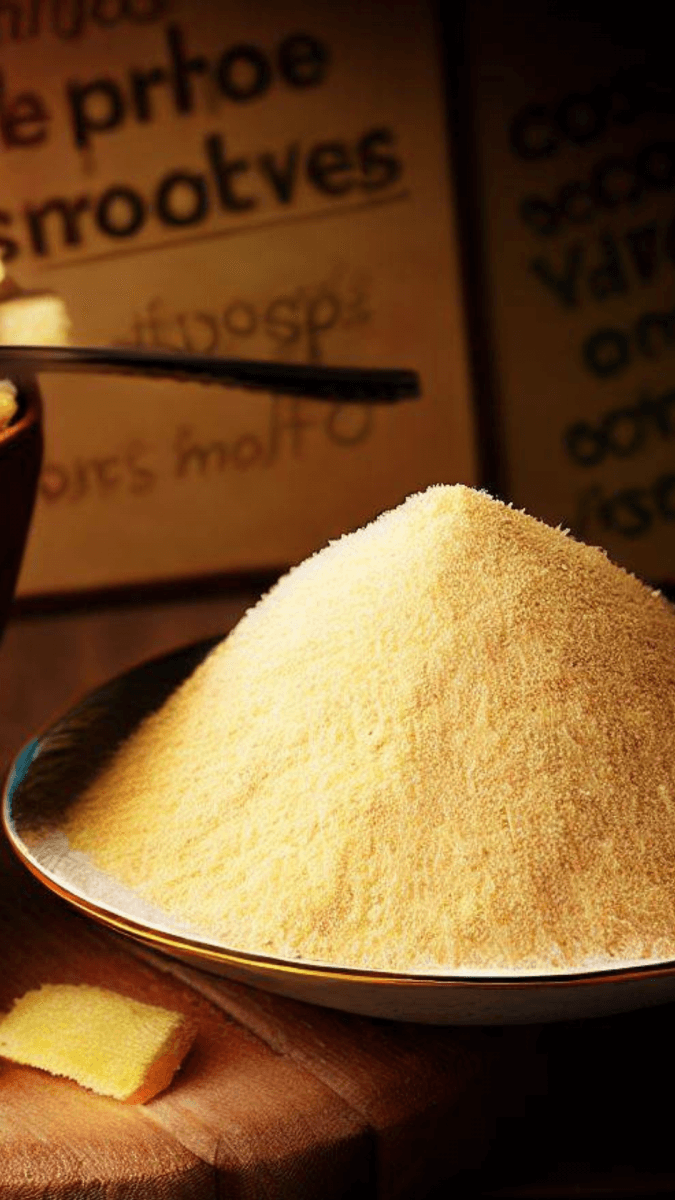
Soy, gluten or tree nuts
Soy, gluten, and tree nuts are not direct substitutes for Romano cheese in terms of flavor and texture. However, if you’re looking for alternative options due to lifestyle choices, dietary restrictions or allergies, here are some possibilities:
- There are soy-based cheeses available in the market that can be used as a substitute for Romano cheese. These cheeses are typically made from soy proteins and may have a somewhat similar texture when grated or shaved. However, the flavor profile will be different, so it’s important to consider how it will complement your dish.
- Gluten-based cheeses are typically made from ingredients like tapioca starch or modified food starch. While they can be used as a substitute for cheese in certain recipes, they may not provide the same taste or texture as Romano cheese. It’s essential to read the labels and choose a product that suits your dietary needs and preferences.
- There are various nut-based cheeses available that can be used as substitutes for Romano cheese. These cheeses are made from nuts like almonds, cashews, or macadamias. While they won’t replicate the exact flavor and texture, they can offer a creamy and rich element to your dishes.
When using any of these alternatives, it’s important to keep in mind that they will have their own unique flavors. It may require some experimentation to find the best option that suits your taste preferences and dietary requirements. Consider trying different brands or homemade recipes to find the closest match to Romano cheese that works for you.
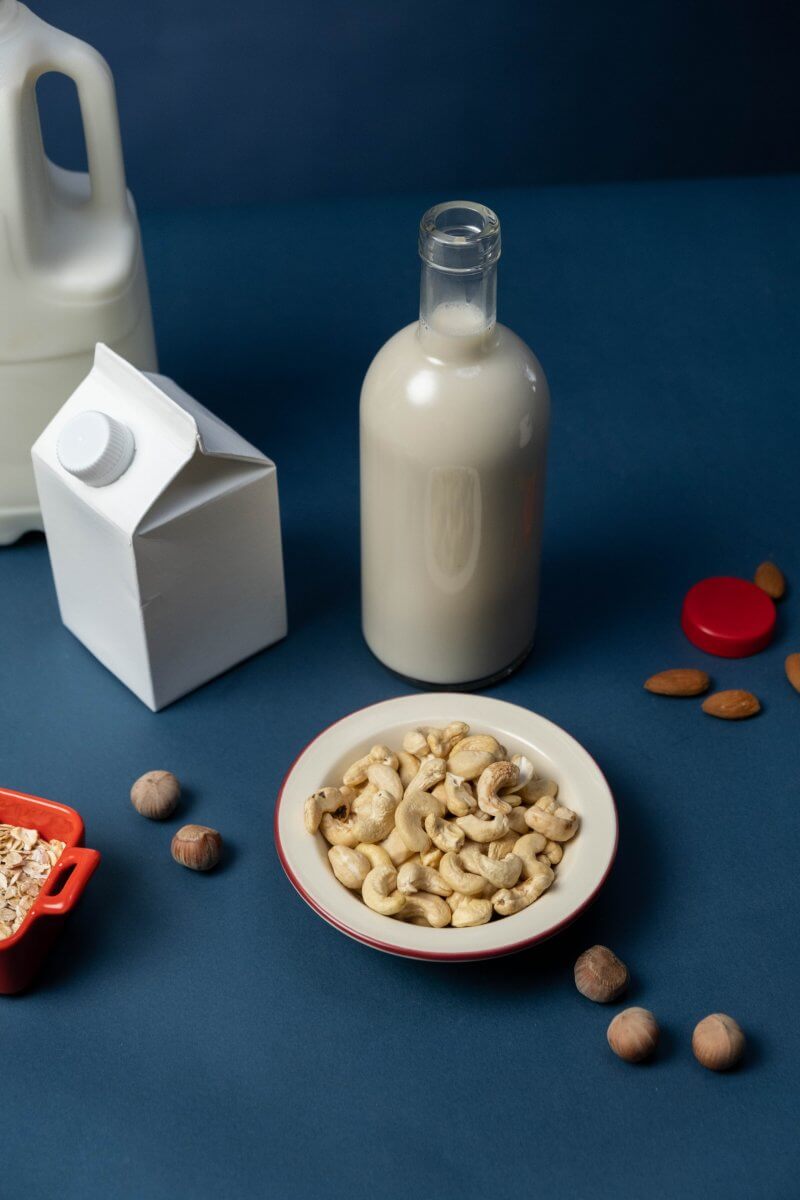
My recipe for homemade Vegan Romano Cheese
If I have guests coming for dinner and I know some of them prefer a vegan diet, I will go that extra mile and make my own homemade Romano Cheese. Here’s my favorite recipe for homemade vegan Romano cheese:
Ingredients:
- 1 cup raw cashews
- 2 tablespoons nutritional yeast
- 1 tablespoon lemon juice
- 1 teaspoon garlic powder
- 1 teaspoon onion powder
- 1 teaspoon salt
Instructions:
- Place the cashews in a bowl and cover them with water. Let them soak for at least 4 hours or overnight. This will help soften the cashews and make them easier to blend.
- Drain the cashews and transfer them to a blender or food processor.
- Add the nutritional yeast, lemon juice, garlic powder, onion powder, and salt to the blender.
- Blend the ingredients on high speed until you achieve a smooth and creamy consistency. You may need to stop and scrape down the sides of the blender or food processor a few times to ensure everything is well mixed.
- Taste the mixture and adjust the seasonings according to your preference. You can add more nutritional yeast for a stronger cheesy flavor or more salt and spices for extra taste.
- Once you’re satisfied with the flavor, transfer the mixture to an airtight container or a cheese mold lined with cheesecloth. Press down on the mixture to remove any air bubbles and smooth the surface.
- If you’re using a cheese mold, fold the excess cheesecloth over the top of the mixture, place a small plate on top, and add some weights to create pressure. If you don’t have a cheese mold, you can simply use an airtight container and press down on the mixture with your hands or the back of a spoon to create a firm shape.
- Let the cheese sit at room temperature for 24-48 hours to allow it to firm up and develop its flavors. If you prefer a sharper taste, you can let it age in the refrigerator for a few more days.
- Once the cheese has reached the desired consistency, remove it from the mold or container and discard the cheesecloth, if used.
- Store it in the refrigerator in an airtight container for up to two weeks.
Enjoy your vegan Romano cheese!
FAQs
Can you substitute ricotta cheese for Romano cheese?
Substituting ricotta cheese for Romano cheese isn’t a great idea because they have very different textures and flavors. Romano cheese is hard, salty, and tangy, while ricotta is soft, creamy, and mild. If you’re in a pinch, you might want to try Parmesan or Pecorino as a closer substitute for Romano. They’ll keep that sharp, savory flavor in your dish!
What’s the difference between Romano and Parmesan cheese?
Romano and Parmesan cheese are both hard, salty Italian cheeses, but they have distinct differences. Romano, especially Pecorino Romano, is made from sheep’s milk, giving it a sharper, tangier flavor. Parmesan, or Parmigiano-Reggiano, is made from cow’s milk and has a nutty, slightly sweet taste. Romano is generally saltier and bolder, while Parmesan is milder and more versatile. Both are delicious, but they bring different vibes to your dishes.
Summary for Romano Cheese substitutes
Okay – that’s you all sorted with suitable substitutes for Romano Cheese.
To summarize, there isn’t a direct substitute for Romano cheese that replicates its exact flavor and texture. I have listed some quality cheeses that you can try. However, if you have dietary restrictions or allergies, you can explore alternatives such as soy-based cheeses, gluten-based cheese alternatives, or nut-based cheeses. These options can provide some resemblance to the taste and texture of Romano cheese, but it’s important to note that they will have their own distinct flavors. Experimentation with different brands or homemade recipes can help you find the best substitute that suits your needs and preferences.
If you would like to learn about other ingredients you can swap out, why not head over to our Substitutes section?
